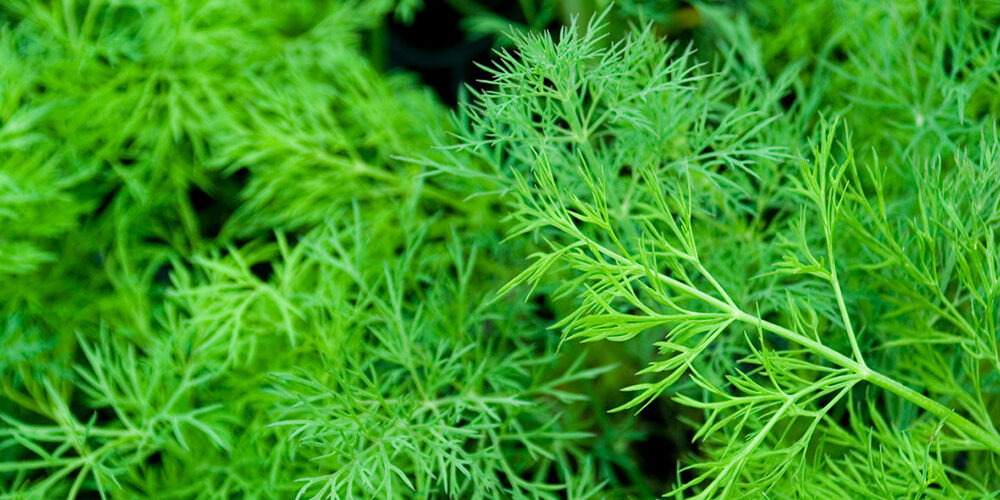Growing Dill
Posted On April 5, 2020

Dill is an annual, self-seeding plant with feathery green leaves. It is used most commonly in soups and stews (see sour cream dill cucumber salad recipe) or for pickling. Dill weed is easy to grow. If you’re planting dill for pickling, plant every few weeks into midsummer to ensure a constant supply for when the harvest begins!
To create a permanent patch of dill, allow some of the plants to flower and go to seed each year—you’ll have plenty of early dill to start the season.
Dill attracts beneficial insects such as wasps and other predatory insects to your garden, and is a host plant for the caterpillar of the black swallowtail butterfly.
Planting
When to plant dill
- Dill seeds should be sown directly into the garden (dill doesn’t transplant well) after the threat of frost has passed in the spring.
- The soil temperature should be between 60 and 70ºF (15 and 21°C) for the best results.
- Plant it every couple of weeks until mid summer to ensure a constant supply.
Choosing and preparing a planting site
- Plant in full sun.
- Choose a site that has well-draining soil that’s rich in organic matter. The pH of the soil should be between slightly acidic and neutral.
- In your garden, plant it next to cabbage or onions, but keep it away from carrots.
- Make sure to shelter dill from strong winds.
How to plant dill
- Sow seeds about ¼-inch deep and 18 inches apart.
- After 10 to 14 days, young plants should appear in the soil. Wait another 10 to 14 days, then thin the plants to about 12 to 18 inches apart (if they aren’t already spaced well enough).
Care
How to grow dill
- Water the plants freely during the growing season.
- In order to ensure a season-long fresh supply of dill, continue sowing seeds every few weeks. For an extended harvest, do not allow flowers to grow on the plants.
- If the dill was allowed to go to seed last year and the soil hasn’t been disturbed too much, more plants will grow the next season.
Pests/Diseases
- Leaf spot and occasionally a few other types of fungal leaf and root diseases
Harvest/Storage
How to harvest dill
- As soon as the plant has four to five leaves, you can start harvesting. Pinch off the leaves or cut them off with scissors.
- If you have a lot of plants, you can pinch off entire stalks.
Recommended Varieties
- Fernleaf dill weed is good for pickling and for use in potato salads, cucumber soup, and fish dishes.
- For lots of fernleaf, plant ‘Bouquet’.
- For large seed heads, plant ‘Mammoth’.
Website: www.almanac.com